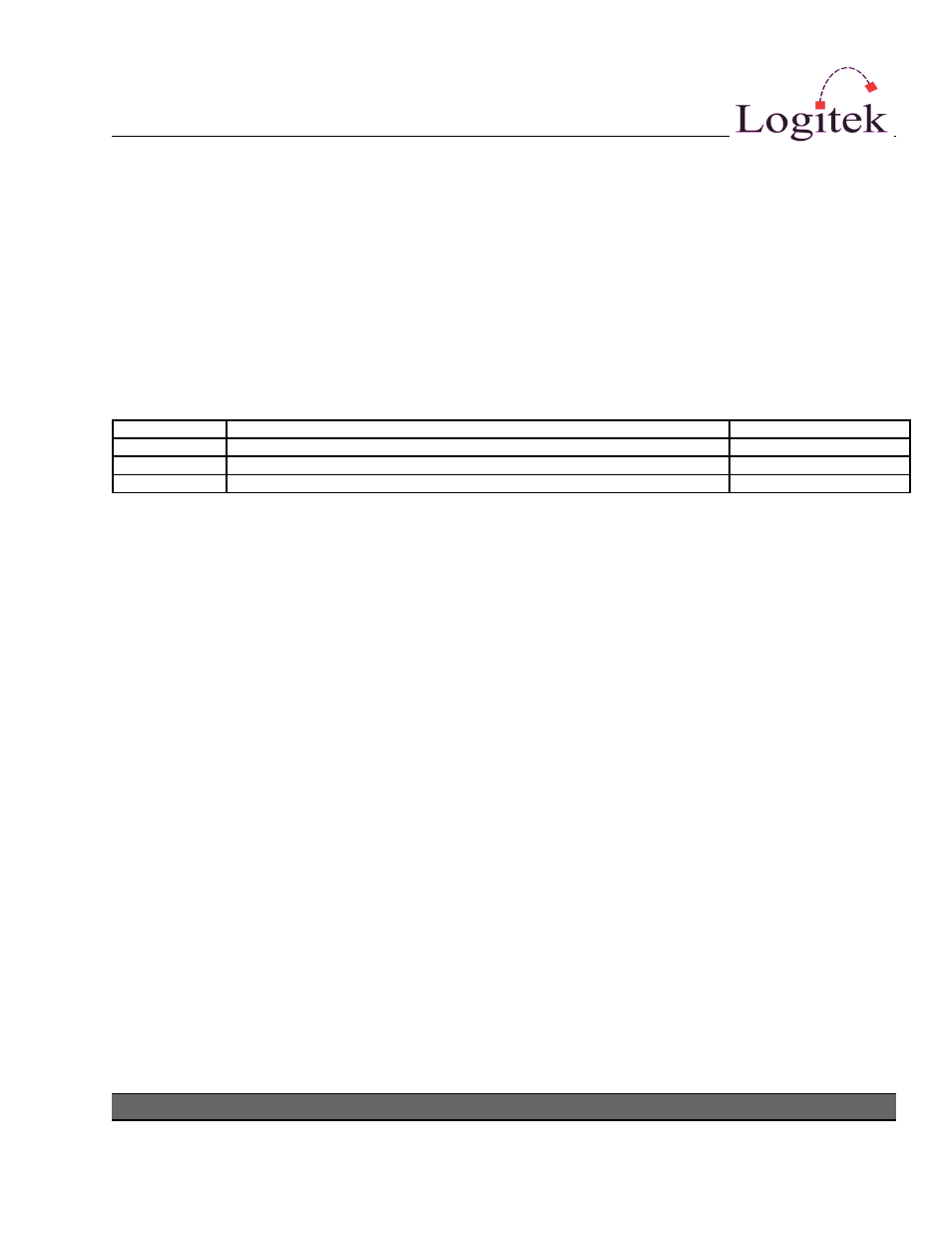Device & bus addressing – Logitek Electronic Systems Pilot User Manual
Page 17

Device & Bus Addressing
Each device (such as a fader input or button panel) requires its own Device Number. Within that
device, each button, lamp and feature has a Bus Number. Together, the Device and Bus Numbers
allow the JetStream and Surface to communicate.
When configuring the Pilot’s programmable buttons in CommandBuilder, you will require the
Device Number
and Bus Number for each button or lamp. The information below will help you
determine the addressing scheme in use on your Pilot.
Modules
Module
How Addressing is determined
Max Modules Supported
PLT-MON
Uses the standard Monitor, Headphones, Guest/Studio & Cue Gain addressing
1
PLT-FADER
Device Set determined by COM port allocation (pre-defined)
4 modules (24 faders)
PLT-METER
Uses standard PGM Meter addressing
1
Device Numbers
In Pilot v1.x the Device Number of a module is determined by its firmware and position.
Dual Controls / Split Consoles
The Pilot does not support Dual Controls or Split Consoles. It is designed as a single self-contained
console.
Softkey Addressing
The twelve softkeys on the monitor module follow the Numix Bridge Button addressing scheme,
therefore the Bridge Button and Bridge Lamp keywords in Command Builder may be used.
The softkey buttons for a console connected to JetStream port 1 are on device 28 and the lamps are
on device 27. For port 2, use device 50 for buttons and 4F for lamps. For port 3, use device 64 for
buttons and 63 for lamps. Bus numbers are 32-43.
For example, button #1 on a console connected to JetStream port 1 is device 28 bus 32 and
its corresponding lamp is device 27 bus 32. Alternatively, it is valid to address button #1 on
port 1 as surf 1 bridgebutton 1 and its corresponding lamp as surf 1 bridgelamp 1.
Command Builder will translate those keywords into the appropriate device and bus numbers.
Logitek Pilot Reference Manual
17
